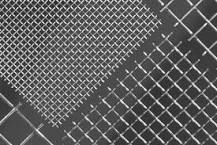Jul . 30, 2024 16:51 Back to list
Optimal Dimensions for Industrial Welded Wire Mesh Production in Factories and Their Applications
Understanding Standard Welded Wire Mesh Sizes and Their Applications
Welded wire mesh is a versatile product used in a variety of applications across numerous industries. It is composed of cross wires that are welded together at their intersections, creating a strong and durable mesh grid. The manufacturing process involves high-quality steel wiring which ensures strength and longevity. One crucial aspect of welded wire mesh is its size specifications, which can greatly influence its performance in different applications.
Standard Sizes of Welded Wire Mesh
Welded wire mesh is produced in various sizes that can be customized according to specific needs. Standard sizes are generally categorized by the spacing of the wires and the diameter of the wire itself. Common mesh sizes include 1x1 inch, 2x2 inches, and 4x4 inches, while wire diameters typically vary from 14 gauge to 6 gauge. The choice of size depends heavily on the intended use of the mesh.
For instance, a 1x1 inch welded wire mesh made from heavier gauge steel is often employed in heavy-duty applications such as animal enclosures or security fencing, where strength and resilience are pivotal. On the other hand, a 2x2 inch or 4x4 inch mesh may be utilized in concrete reinforcement or as a support structure for various construction materials, offering adequate strength while being easier to handle and install.
Importance of Choosing the Right Size
Selecting the right size of welded wire mesh is essential for ensuring that it can withstand the intended loads and environmental conditions. For example, if the mesh is too large, it may not provide sufficient support, especially in applications involving weight-bearing structures like retaining walls or floors. Conversely, a mesh that is too small may be over-engineered for a particular application, leading to unnecessary costs.
standard welded wire mesh size factory

Additionally, the spacing between wires affects how well the mesh guards against intruders or animals. Smaller mesh openings provide enhanced security but might limit visibility and airflow, while larger openings offer better visibility but less security.
Applications of Welded Wire Mesh
Welded wire mesh is utilized in various fields, highlighting its diverse applications. In the construction industry, it is commonly used for reinforcing concrete slabs, walls, and pavements. Its ability to distribute weight evenly helps to reduce cracking and enhance the durability of structures.
In agriculture, welded wire mesh serves as fencing for livestock enclosures, protecting animals from predators while keeping them contained. The mesh is also utilized in garden borders to prevent pests from accessing crops. In industrial settings, it is used for creating protective barriers, storage cages, and shelving units.
Moreover, welded wire mesh has applications in architectural designs. It can be used for decorative fencing, trellises, and even as building facades. The aesthetic appeal combined with its functional characteristics makes it a popular choice among architects and designers.
Conclusion
The standard sizes of welded wire mesh play a critical role in its effectiveness in various applications. Understanding the different sizes and their utility can help manufacturers, builders, and consumers make informed decisions when selecting the right products for their projects. Whether used for agricultural, industrial, or architectural purposes, the durability and adaptability of welded wire mesh ensure that it remains a preferred material in many fields. By choosing the correct specifications tailored to specific needs, users can optimize performance and achieve satisfactory results in their applications.
-
Glass Jar with Wooden Screw Lid-Anping Puersen|Heat Resistant,BPA Free
NewsAug.16,2025
-
Glass Food Storage Jar with Screw Wooden Lid - Anping County Puersen | Heat Resistance, BPA Free
NewsAug.16,2025
-
High Borosilicate Glass Food Storage Jar with Wooden Screw Lid|Anping County Puersen Hardware Wire Mesh Products Co., Ltd
NewsAug.16,2025
-
Welded Wire Mesh for Industry Factory - Durable & Strong
NewsAug.16,2025
-
Glass Jar with Wooden Screw Lid - Anping County Puersen Hardware Wire Mesh Products Co.,Ltd|Durable, Eco-Friendly Food Storage
NewsAug.15,2025
-
Chain Link Fence - Anping County Puersen | Durable, Versatile Fencing
NewsAug.15,2025

